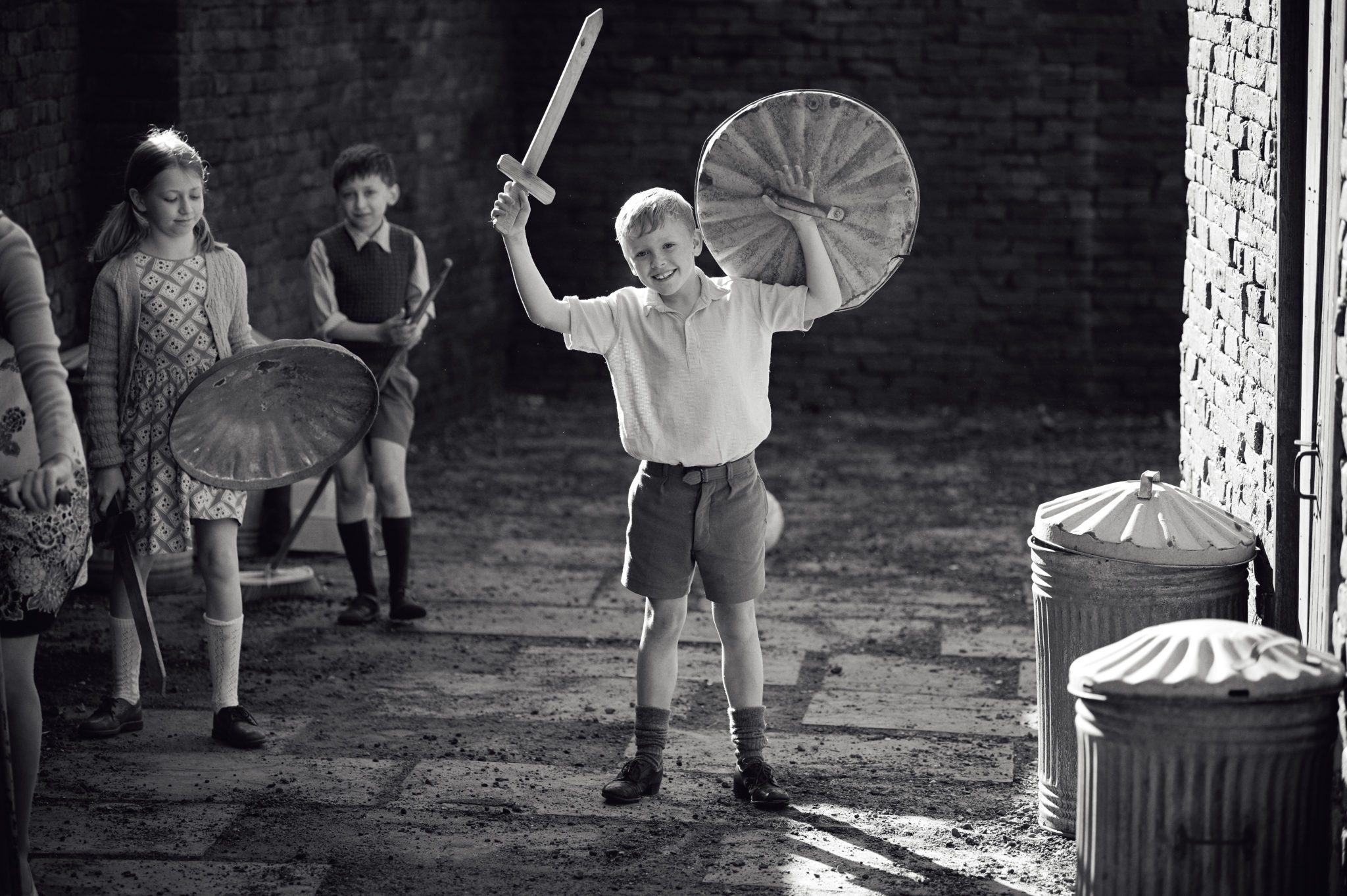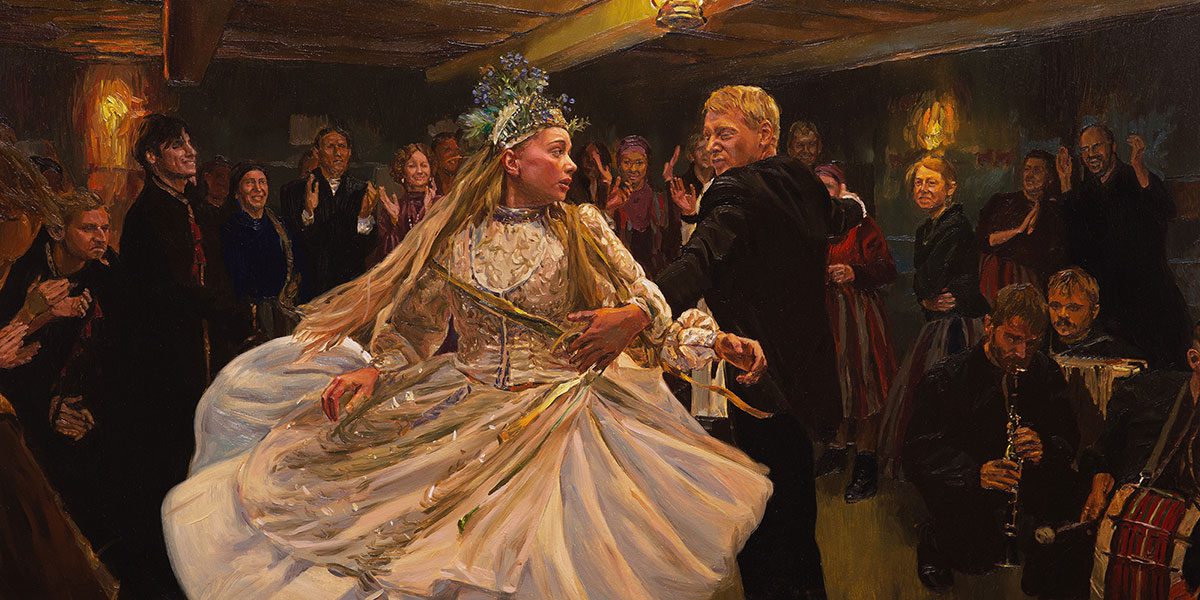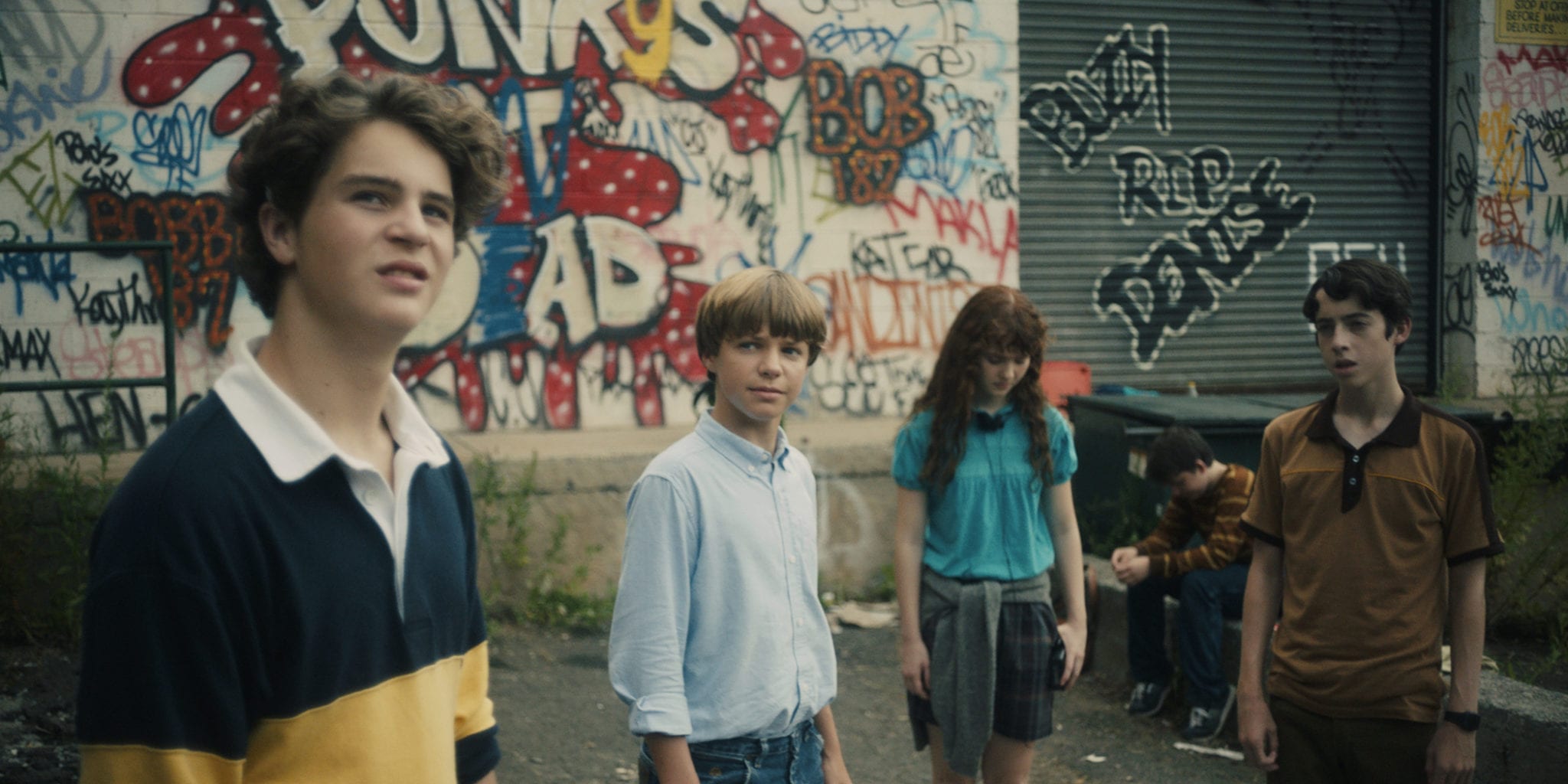?There are no roads to Shangri-la from our parts of Belfast.?
In Belfast, Kenneth Branagh, who wrote and directed, creates a fictionalized version of his childhood. It is a film built on the nostalgia of youth with a background of the violence of the sectarian struggles of Northern Ireland. It is a blend of an homage to the city of his birth, a paean to family, and a memorial to the lives changed and lost in that time. (The closing dedication of the film is ?For those who stayed, for those who left, and for those who were lost.?)

Buddy (Jude Hill), a nine year old boy, lives with his parents (Cait?ona Balfe and Jamie Dornan) and brother in a predominantly Protestant neighborhood in 1969. His Pa works as a joiner on projects in England, coming home for occasional weekends. His Ma keeps things running at home, dealing with the debt they?ve accumulated. The family has lived their lives on that street. He is surrounded by cousins and his grandparents (Judi Dench and Ciar?n Hinds). It is a family filled with love, even if there are rough patches to get through. It seems like a wonderful place.
The film opens with an idyllic day in the street, with the children running and playing in various ways. There are the joyous sounds of song and laughter. But then suddenly a mob appears with rocks and Molotov cocktails, and starts destroying the neighborhood. The scene quickly becomes chaotic with frightened parents and children trying to get to safety. Soon the street is walled off. Vigilantes patrol the streets. One young man demands that everyone must contribute ?cash or commitment? to the Protestant cause. Buddy?s Pa wants nothing to do with the divisive situation. Instead, he is trying to convince Ma that they should emigrate?bringing brochures for Sydney and Vancouver. In time, Pa gets an offer that would have them move to England permanently.
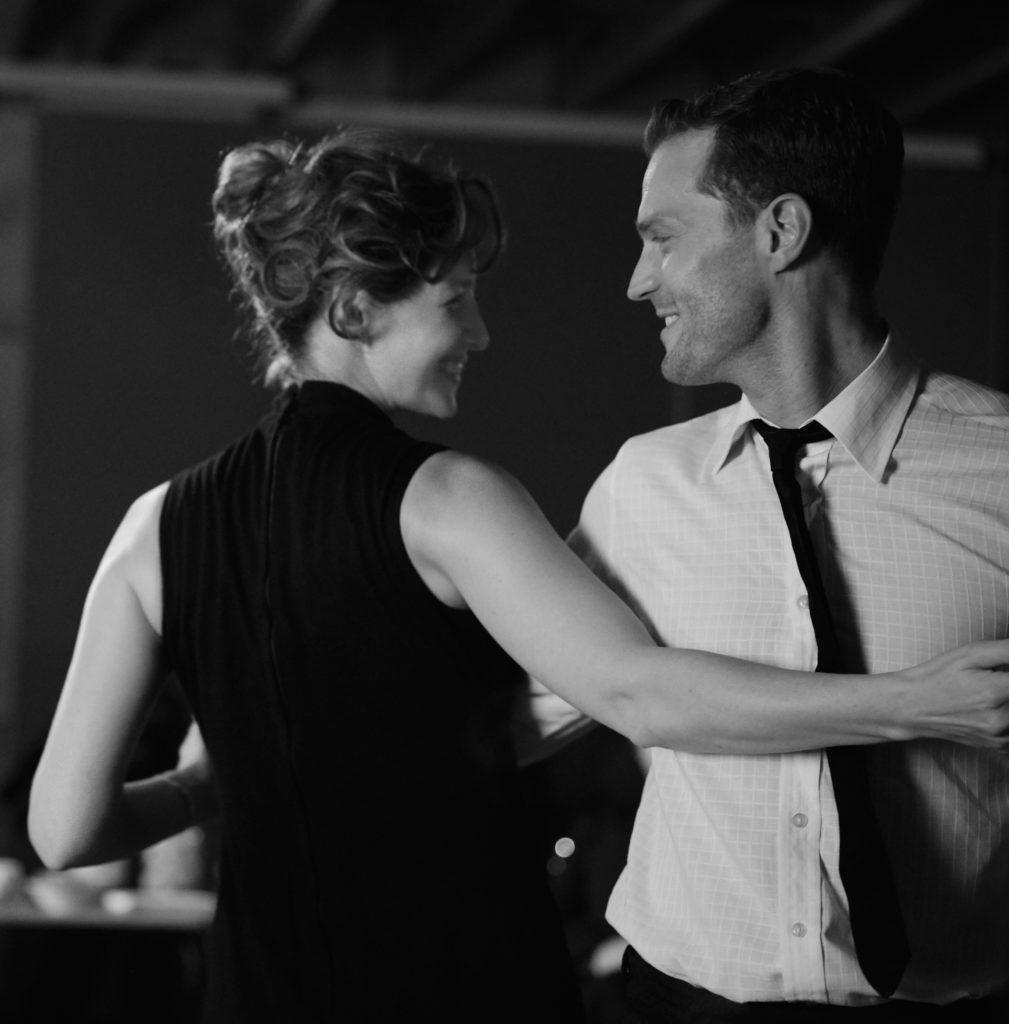
But this is all told through Buddy?s eyes. He overhears these discussions about leaving Belfast, but wants nothing to do with the idea. All he knows (and all Ma has known) is these few blocks. He also sees the world through the films he watches at the cinema and on TV. The films on TV are often classic westerns. We see as he watches The Man Who Shot Liberty Valance and High Noon. High Noon seems especially appropriate because it is a story of leaving to avoid violence or standing up to that violence. It is very much the situation that Buddy sees Pa facing. And in a key scene we see Pa as Billy sees him: the marshal facing an evil mob.
The film has an interesting look: a darker, richer version of black and white than we are used to. There are also splashes of color when Buddy goes to the cinema to see One Million Years, B.C. and Chitty Chitty Bang Bang. We see the memories of that time and place as a mixture of light and dark. It is the unreal world of the cinema that is full of color. The film is also filled with the songs of another Belfast native, Van Morrison.
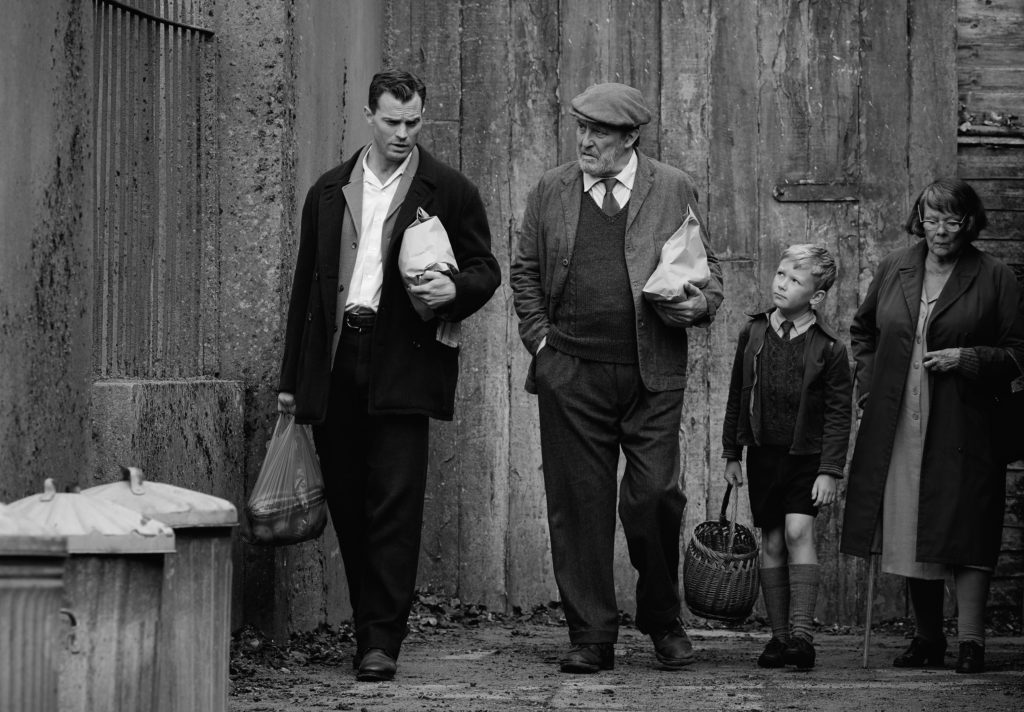
There is an interesting sign at the end of the street Buddy lives on. Painted on the side of a house row it reads, ?This is a faithful saying, and worthy of all acceptation, that Christ Jesus came into the world to save sinners.? It comes from 1 Timothy 1:15 (AV). The presence of those words in this film is both a reminder and a critique of the religious foundations of The Troubles. The film doesn?t identify either side as ?sinners?. However, we understand that Jesus came to save them all?both Catholic and Protestants.
Yet in spite of all that is going on, for Buddy, this is the place he loves?filled with people he loves?and will always love. Even after leaving to a different life, this is the place, even with all the difficulties, that has defined him. It?s taken Branaugh fifty years to find a way to tell his story this way.
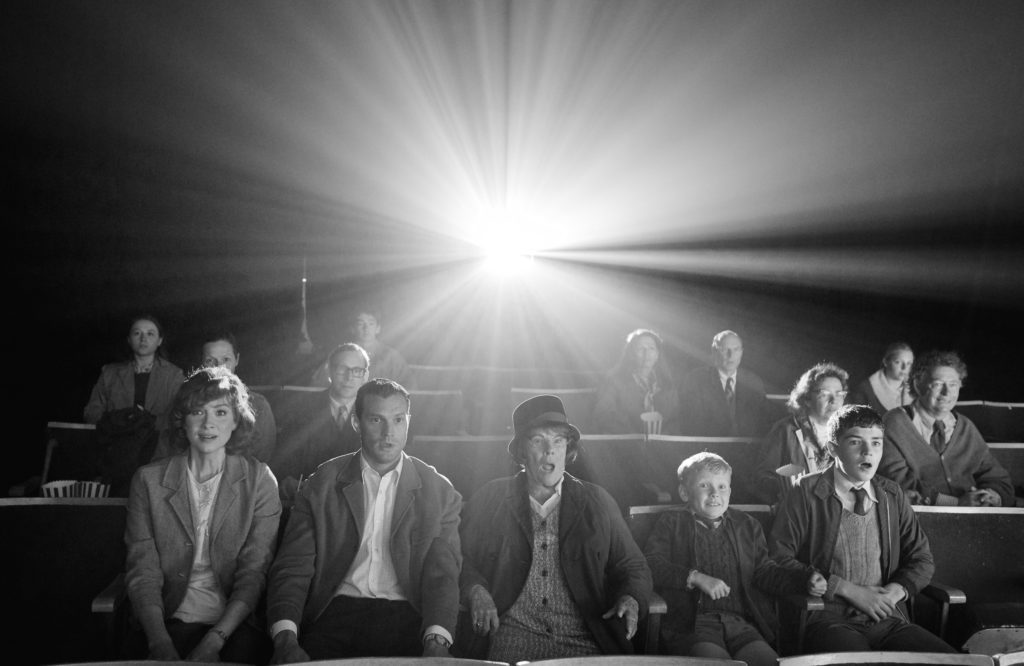
Belfast is in general release.
Photos courtesy of Focus Features.

